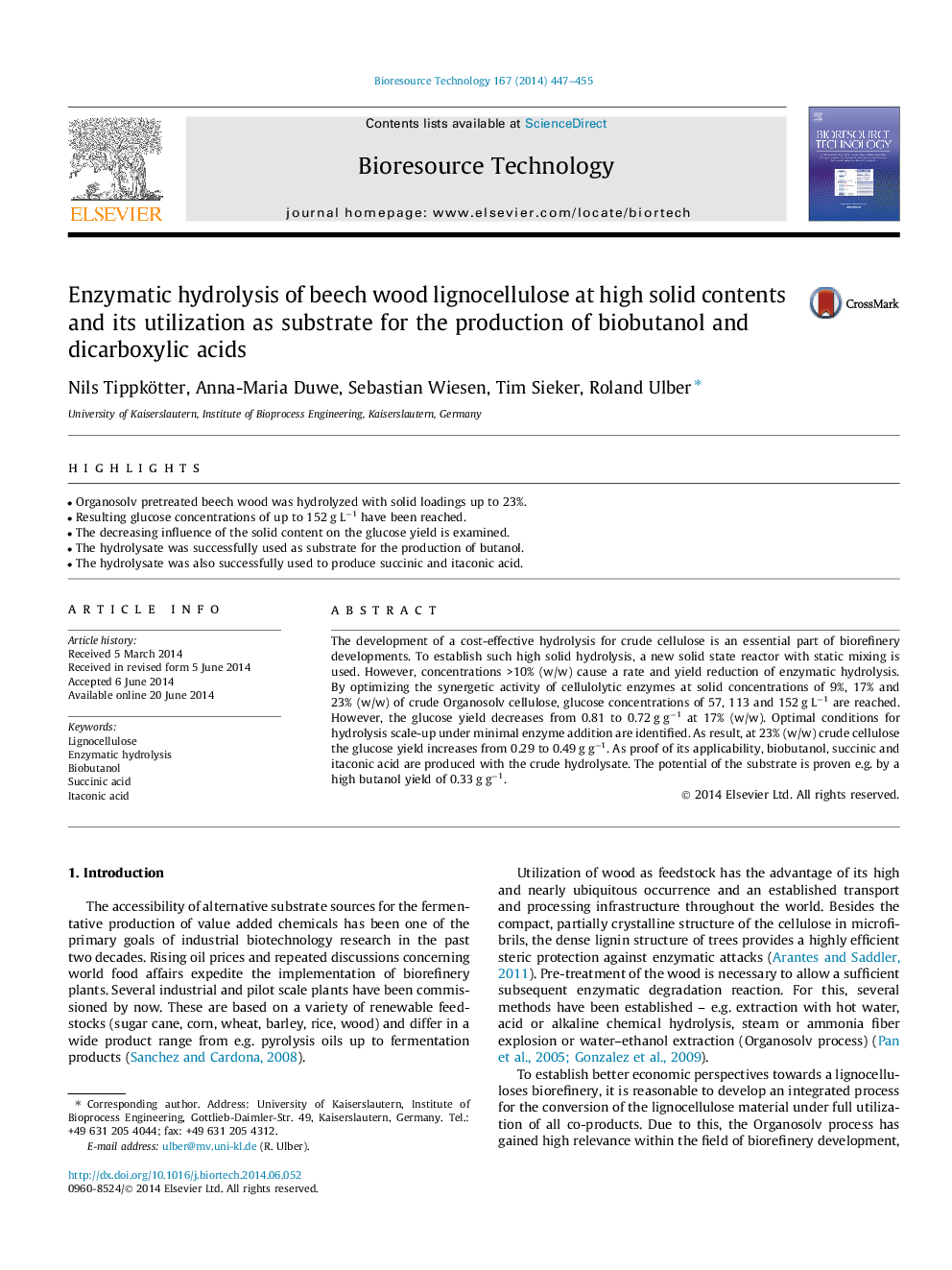| Article ID | Journal | Published Year | Pages | File Type |
|---|---|---|---|---|
| 7076818 | Bioresource Technology | 2014 | 9 Pages |
Abstract
The development of a cost-effective hydrolysis for crude cellulose is an essential part of biorefinery developments. To establish such high solid hydrolysis, a new solid state reactor with static mixing is used. However, concentrations >10% (w/w) cause a rate and yield reduction of enzymatic hydrolysis. By optimizing the synergetic activity of cellulolytic enzymes at solid concentrations of 9%, 17% and 23% (w/w) of crude Organosolv cellulose, glucose concentrations of 57, 113 and 152 g Lâ1 are reached. However, the glucose yield decreases from 0.81 to 0.72 g gâ1 at 17% (w/w). Optimal conditions for hydrolysis scale-up under minimal enzyme addition are identified. As result, at 23% (w/w) crude cellulose the glucose yield increases from 0.29 to 0.49 g gâ1. As proof of its applicability, biobutanol, succinic and itaconic acid are produced with the crude hydrolysate. The potential of the substrate is proven e.g. by a high butanol yield of 0.33 g gâ1.
Related Topics
Physical Sciences and Engineering
Chemical Engineering
Process Chemistry and Technology
Authors
Nils Tippkötter, Anna-Maria Duwe, Sebastian Wiesen, Tim Sieker, Roland Ulber,
